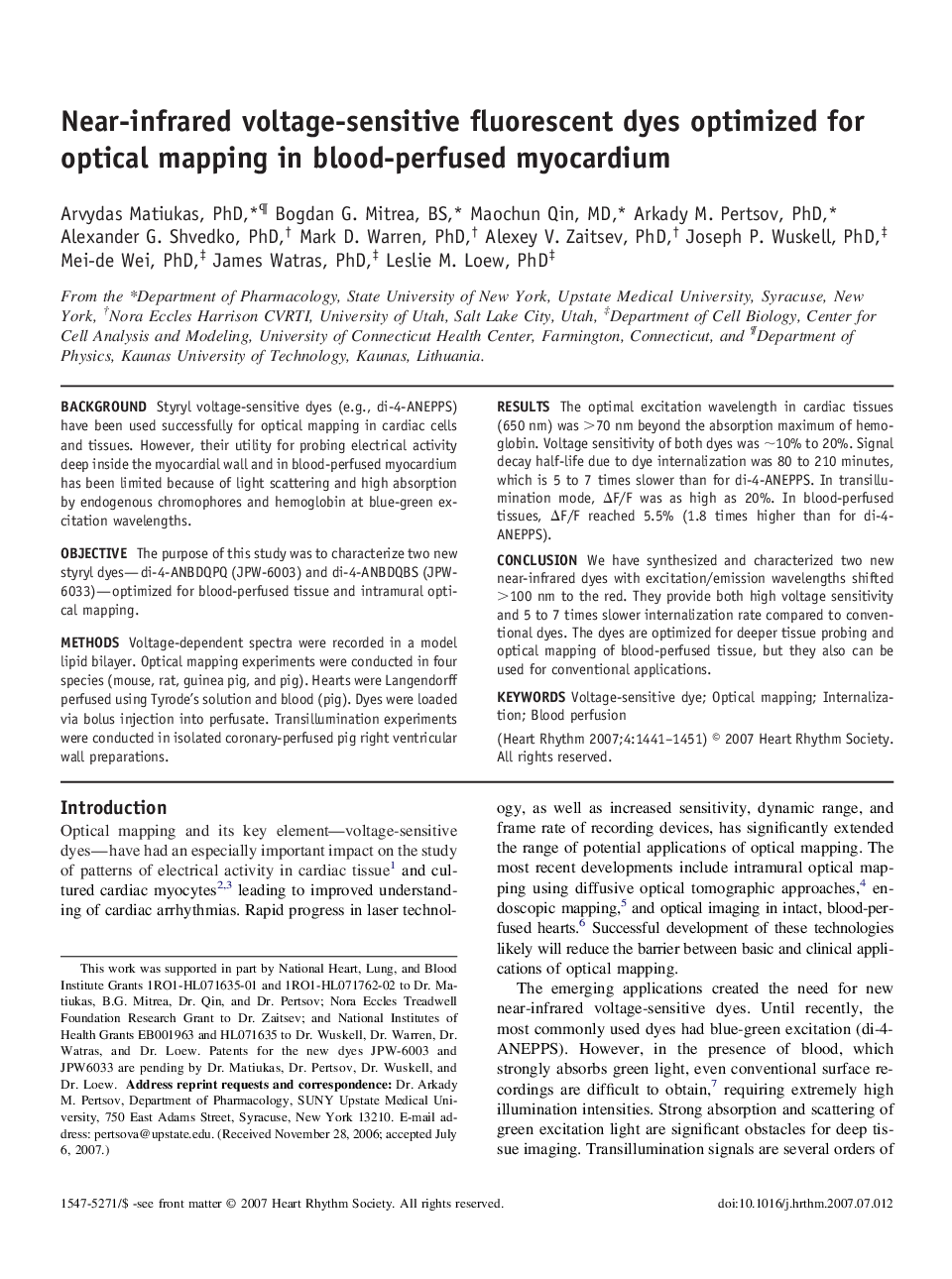| کد مقاله | کد نشریه | سال انتشار | مقاله انگلیسی | نسخه تمام متن |
|---|---|---|---|---|
| 2924553 | 1175909 | 2007 | 11 صفحه PDF | دانلود رایگان |

BackgroundStyryl voltage-sensitive dyes (e.g., di-4-ANEPPS) have been used successfully for optical mapping in cardiac cells and tissues. However, their utility for probing electrical activity deep inside the myocardial wall and in blood-perfused myocardium has been limited because of light scattering and high absorption by endogenous chromophores and hemoglobin at blue-green excitation wavelengths.ObjectiveThe purpose of this study was to characterize two new styryl dyes—di-4-ANBDQPQ (JPW-6003) and di-4-ANBDQBS (JPW-6033)—optimized for blood-perfused tissue and intramural optical mapping.MethodsVoltage-dependent spectra were recorded in a model lipid bilayer. Optical mapping experiments were conducted in four species (mouse, rat, guinea pig, and pig). Hearts were Langendorff perfused using Tyrode’s solution and blood (pig). Dyes were loaded via bolus injection into perfusate. Transillumination experiments were conducted in isolated coronary-perfused pig right ventricular wall preparations.ResultsThe optimal excitation wavelength in cardiac tissues (650 nm) was >70 nm beyond the absorption maximum of hemoglobin. Voltage sensitivity of both dyes was ∼10% to 20%. Signal decay half-life due to dye internalization was 80 to 210 minutes, which is 5 to 7 times slower than for di-4-ANEPPS. In transillumination mode, ΔF/F was as high as 20%. In blood-perfused tissues, ΔF/F reached 5.5% (1.8 times higher than for di-4-ANEPPS).ConclusionWe have synthesized and characterized two new near-infrared dyes with excitation/emission wavelengths shifted >100 nm to the red. They provide both high voltage sensitivity and 5 to 7 times slower internalization rate compared to conventional dyes. The dyes are optimized for deeper tissue probing and optical mapping of blood-perfused tissue, but they also can be used for conventional applications.
Journal: Heart Rhythm - Volume 4, Issue 11, November 2007, Pages 1441–1451